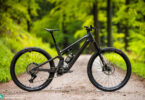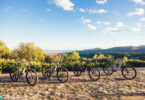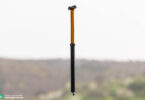How do a bottle cage and a dual crown fork fit together? Specialized have completely overhauled the Turbo Kenevo Expert for 2020, equipping it with the same motor and battery as the current Levo in an attempt to unite opposites. The Turbo Kenevo looks like a thoroughbred downhill bike purpose-built for bike parks and the wildest tracks. But looks can sometimes be deceptive.
Click here for an overview of the best eMTB 2020 group test.
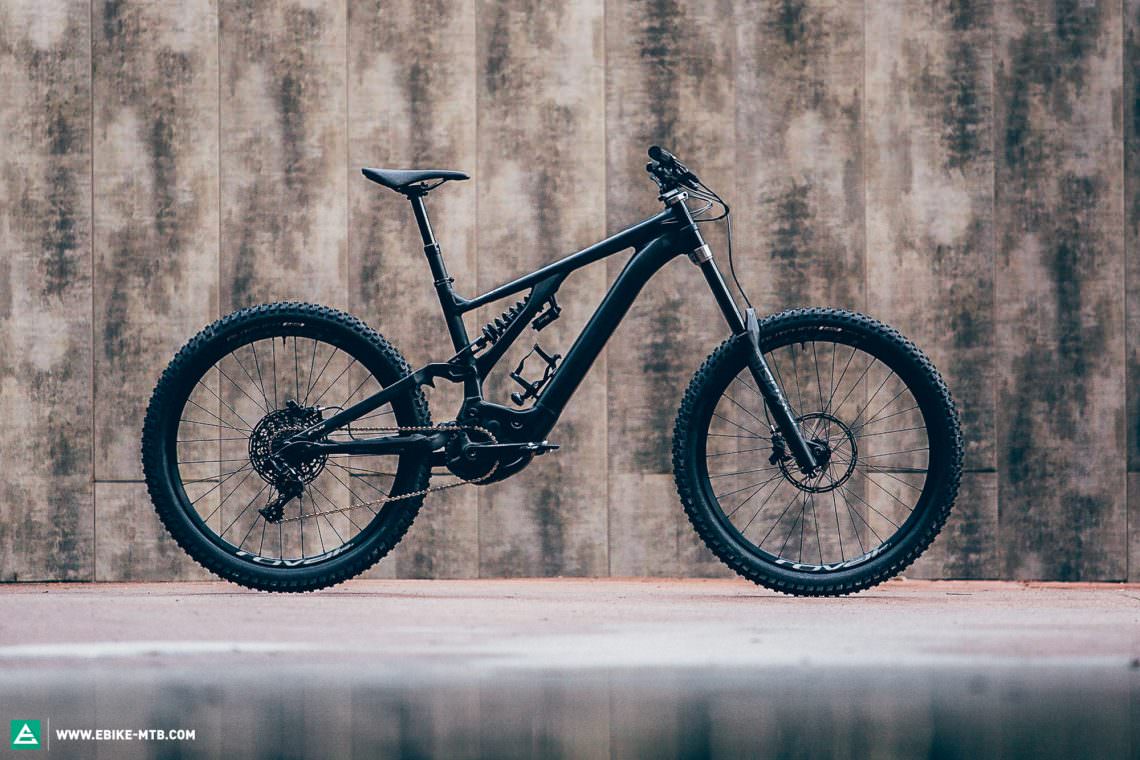
Components, weight and technical details of the Specialized Turbo Kenevo Expert
The Specialized Turbo Kenevo Expert isn’t the only bike in the test field with 180 mm travel at the front and rear, but nonetheless, it immediately stands out from the crowd. The Kenevo is the only bike in the test field to rely on a RockShox BoXXer dual crown fork, which you’ll usually only find on proper downhill bikes. The suspension is completed by a RockShox Super Deluxe Coil shock. However, as we don’t categorise bikes based on their travel, so we won’t do it based on looks either. The € 6,899 Kenevo is a typical Specialized and makes no secret of its kinship with the Levo. The aluminium frame features the same asymmetric brace at the shock as well as Specialized’s proprietary Turbo Connect Unit (TCU) housed in the top tube. You also get Specialized’s 2.1 motor which puts out up to 90 Nm torque and is fed by an internal 700 Wh battery.
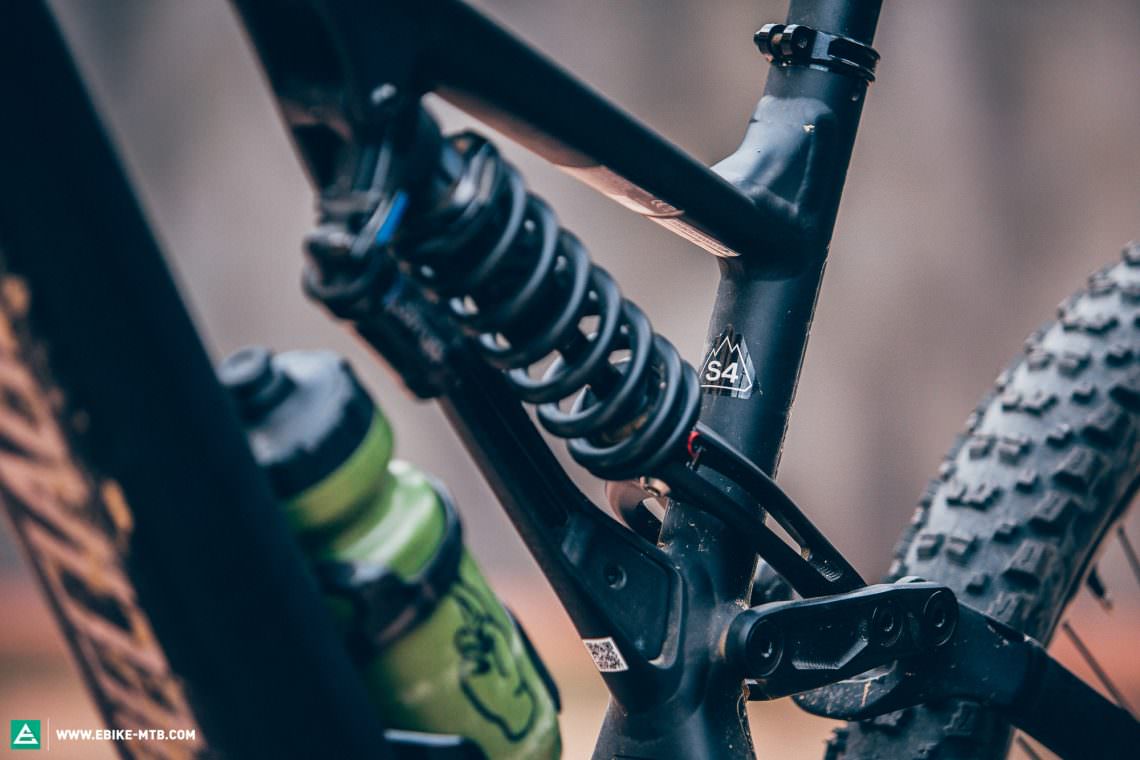
…which size Kenevo suits you. Thanks to the short seat tubes, you can choose the frame size according to your personal preferences regarding reach and stack.
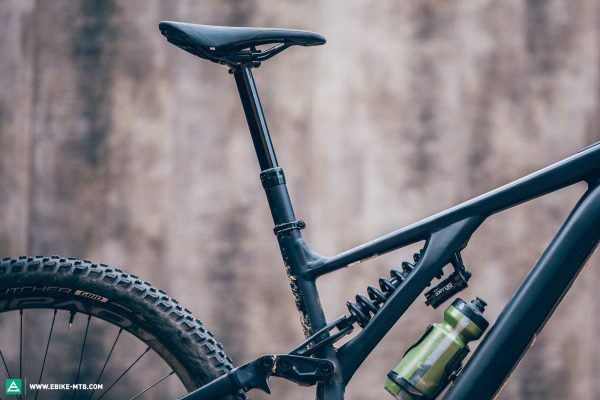
The days when you couldn’t find a dropper post on a bike with a dual crown fork are over on the new Kenevo.
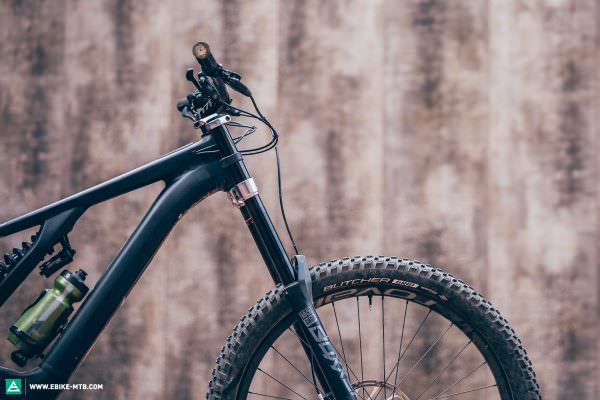
Granted, with the BoXXer the Kenevo looks more like an all-out downhill bike. But after some time on the bike, you quickly get used to the 180 mm travel dual crown fork.
Specialized Turbo Kenevo Expert
€ 6,899
Specifications
Motor Specialized 2.1 90Nm
Battery Specialized M2 700Wh
Display Specialized TCU
Fork RockShox BoXXer Select RC 180 mm
Rear Shock RockShox Super Deluxe Coil Select 180 mm
Seatpost Specialized Command Post IRcc 130 - 160 mm
Brakes SRAM CODE R 200/200 mm
Drivetrain SRAM GX 1x11
Stem Specialized Direct Mount DH 45 mm
Handlebar Specialized Alloy 800 mm
Wheelset Roval Alloy DH 27.5"
Technical Data
Size S2 S3 S4 S5
Weight 24.2 kg
Perm. total weight 161 kg
Max. payload (rider/equipment) 136 kg
Trailer approval no
Kickstand mount no
Specific Features
fully functional even without cockpit remote
Mission Control App
integrated multi tool
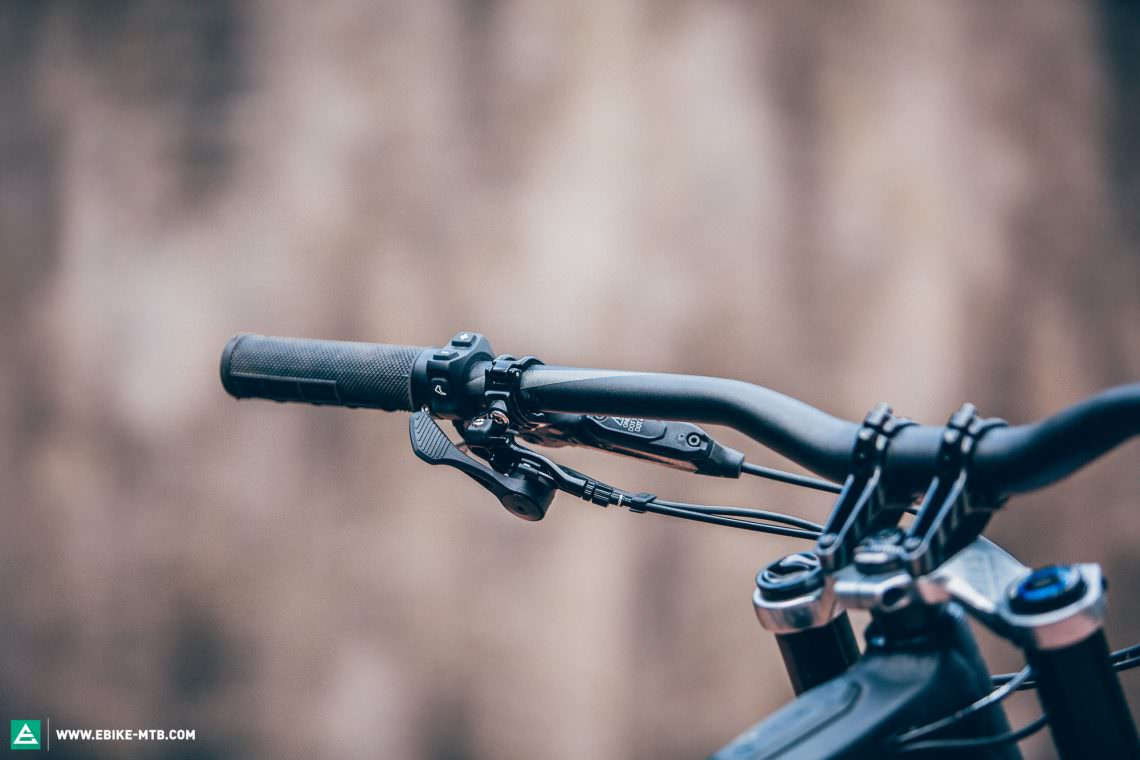
Thanks to the TCU in the top tube, the Kenevo offers all the functions you need without having to use the remote on the handlebar. However, the Remote is so compact and ergonomic that it never bothered us on the Kenevo.
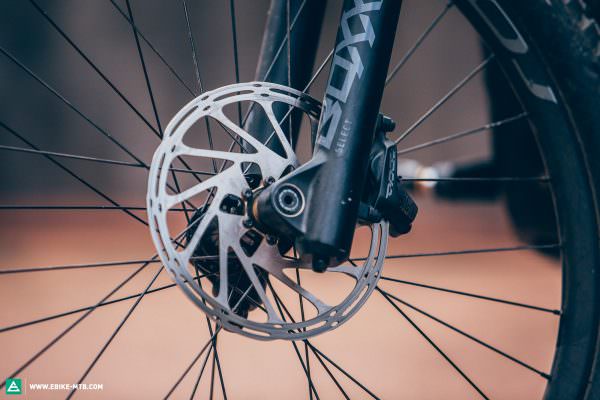
The Kenevo is the fastest and most capable descender in the test field. The braking power of the SRAM CODE R-brakes without the SwingLink lever just can’t keep up.
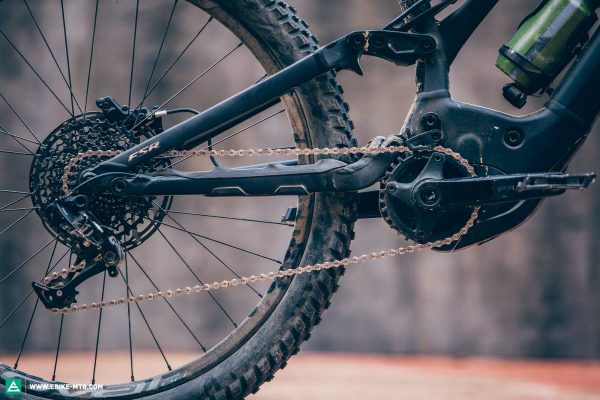
The ridges of the chainstay protector silences the drivetrain just as effectively on the Kenevo as it does on the Levo.
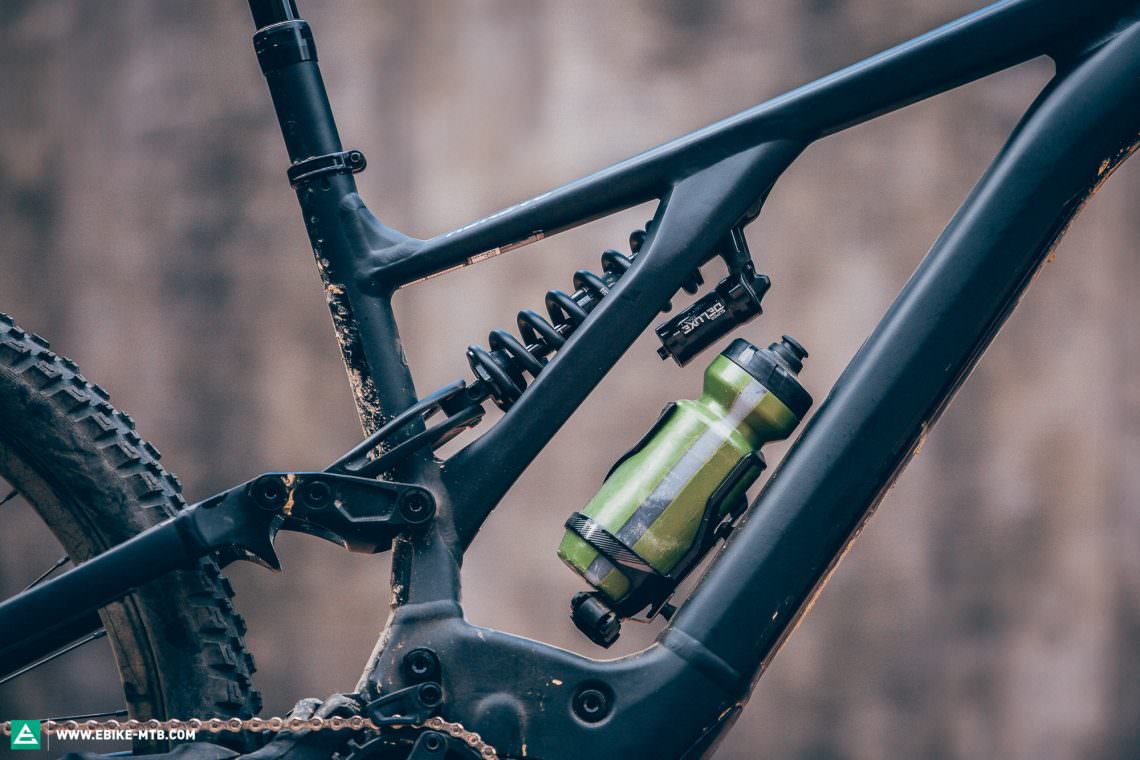
Thanks to the SWAT bottle cage on the Kenevo, you can always take along the water and tools you need on trails outside of the bike park and far away from the next apres bike hut.
Geometry and size of the Specialized
Specialized have realised that eMTBs can no longer be categorised in size according to the length of their seat tubes. Instead, the short seat tube of the Kenevo and the long dropper posts allow you to choose the frame size according to the desired length of the top tube.
| Size | S2 | S3 | S4 | S5 |
|---|---|---|---|---|
| Seat tube | 400 mm | 420 mm | 440 mm | 465 mm |
| Top tube | 585 mm | 612 mm | 639 mm | 666 mm |
| Head tube | 105 mm | 115 mm | 125 mm | 135 mm |
| Head angle | 64.0° | 64.0° | 64.0° | 64.0° |
| Seat angle | 77.0° | 77.0° | 77.0° | 77.0° |
| Chainstays | 454 mm | 454 mm | 454 mm | 454 mm |
| BB Height | 345 mm | 345 mm | 345 mm | 345 mm |
| BB Drop | 14 mm | 14 mm | 14 mm | 14 mm |
| Wheelbase | 1,234 mm | 1,263 mm | 1,293 mm | 1,322 mm |
| Reach | 445 mm | 470 mm | 495 mm | 520 mm |
| Stack | 605 mm | 614 mm | 623 mm | 632 mm |
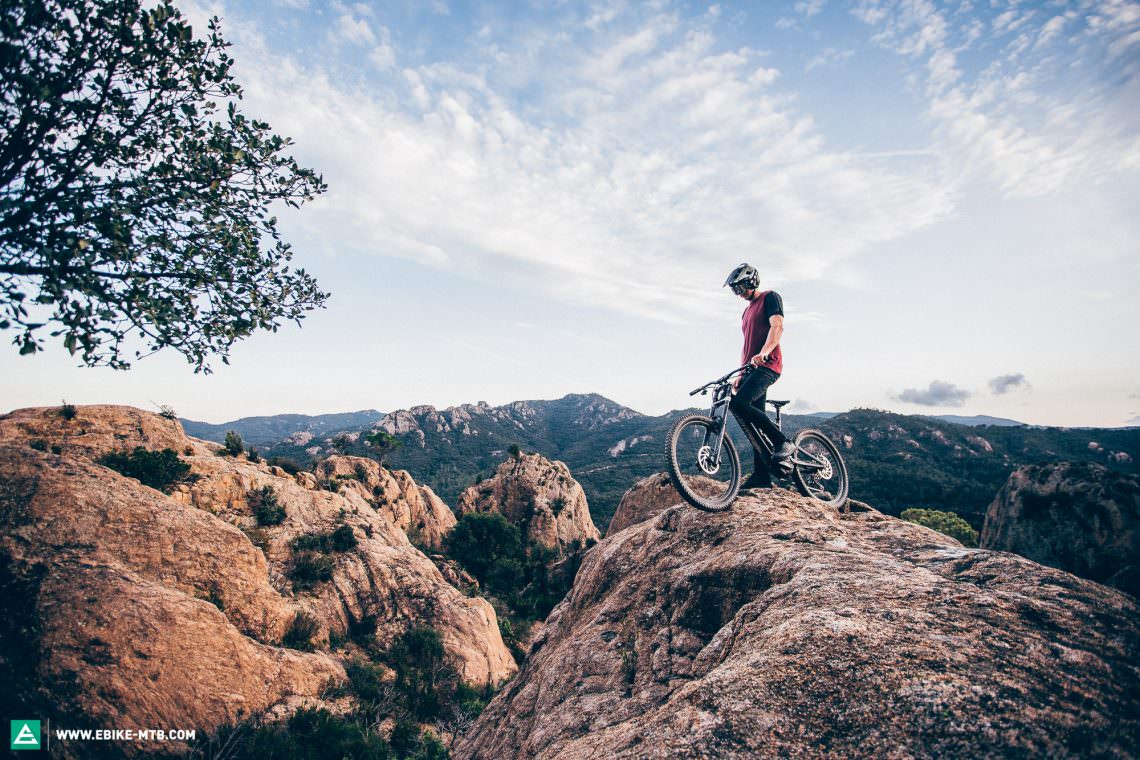
The Specialized Turbo Kenevo Expert on the trail
How does a bike with a dual crown fork climb? The answer: just as well as it would with a regular single crown fork! Despite its bulky appearance, the Kenevo Expert gets up even the most technical climbs. With its super-steep seat tube angle, the rider is positioned centrally between the wheels and in combination with the long front triangle the front wheel is kept sufficiently weighted. As a result, the front wheel stays planted on the ground and only starts lifting on the most extreme climbs despite the very “long” fork. But let’s be honest, if you’re interested in the Kenevo, you’ll want to know how it climbs in Shuttle mode, the most powerful support level that you’ll first have to activate via the Mission Control app. The Specialized 2.1 is based on the Brose motor system, but compared to other bikes, despite losing its natural ride feel this powerful support mode remains bit better to control even on technical climbs. The Kenevo does less well on technical climbs that have to be ridden slowly. The 11-speed SRAM GX drivetrain simply doesn’t have a big enough gear range to get up slow, high-cadence climbs.
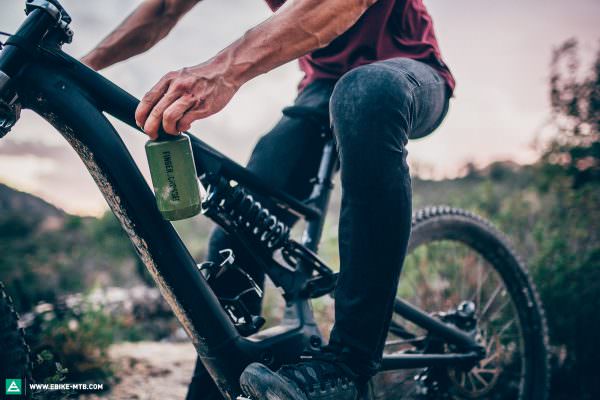
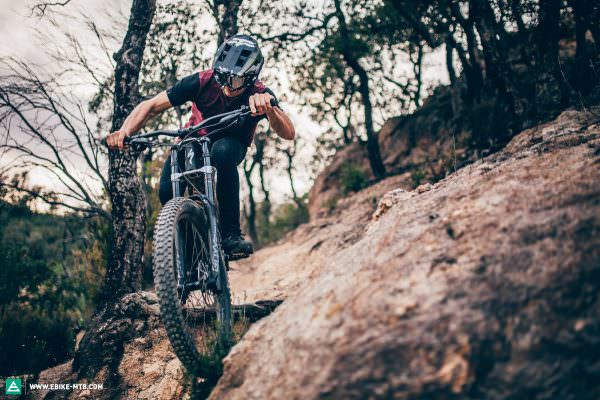
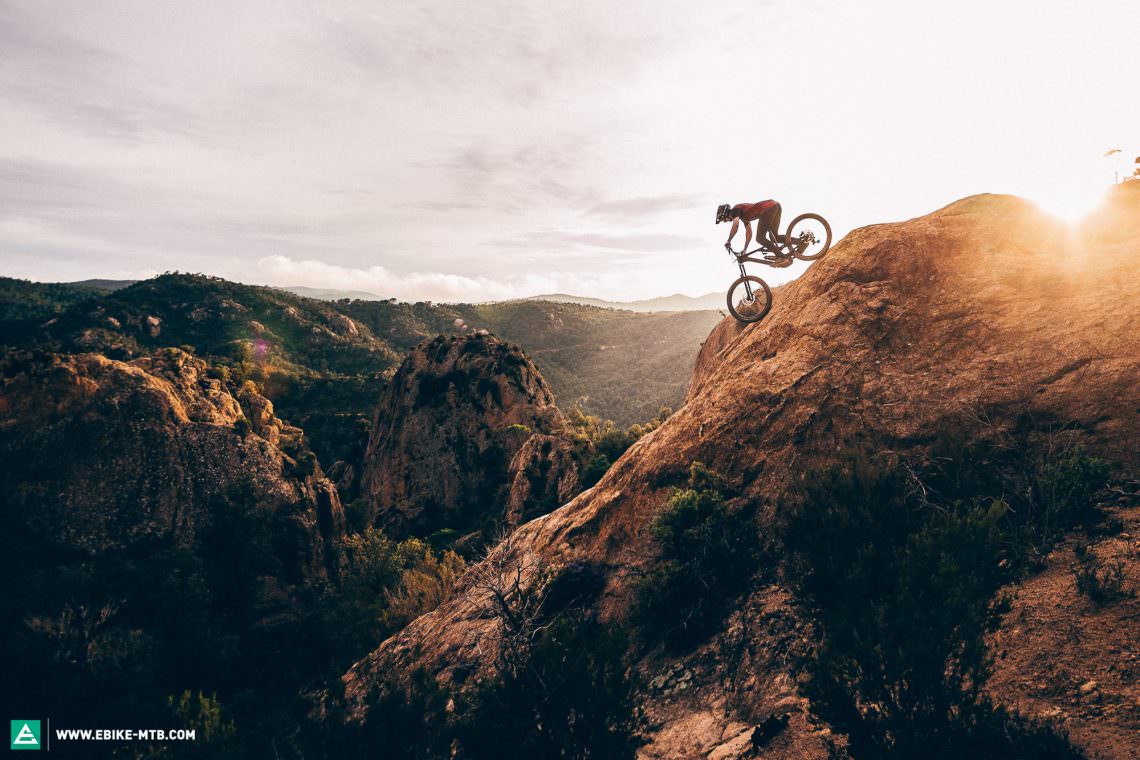
The Specialized Turbo Kenevo Expert is much more than just a downhill bike with a motor.
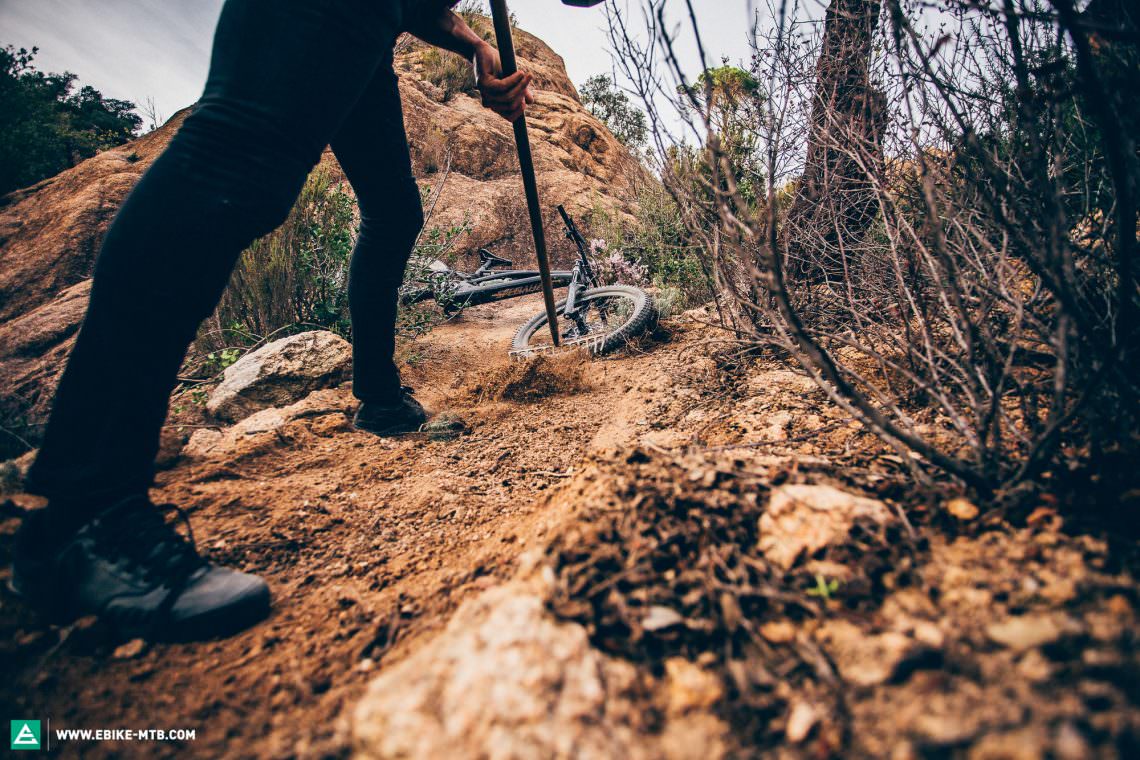
One thing is clear: the 24.2 kg Specialized Turbo Kenevo Expert is a big bike. No matter how rough the terrain, it remains composed, planted and super precise. Whichever line you attempt to ride, with the Kenevo you’ll be able to! Despite the long travel, the suspension remains well defined and always provides the rider with enough feedback from the trail. All of this also makes the Kenevo surprisingly easy to get airborne. The steeper and the faster the trail gets, the more fun you’ll have on the Kenevo. However, on tight, winding trails you eventually pay the price of the tall front end and the long front triangle. You have to actively weight the front of the bike to successfully manoeuvre it around the corners on flat terrain. As composed as the Kenevo is, it requires a lot of rider input to move it around at slower speeds.
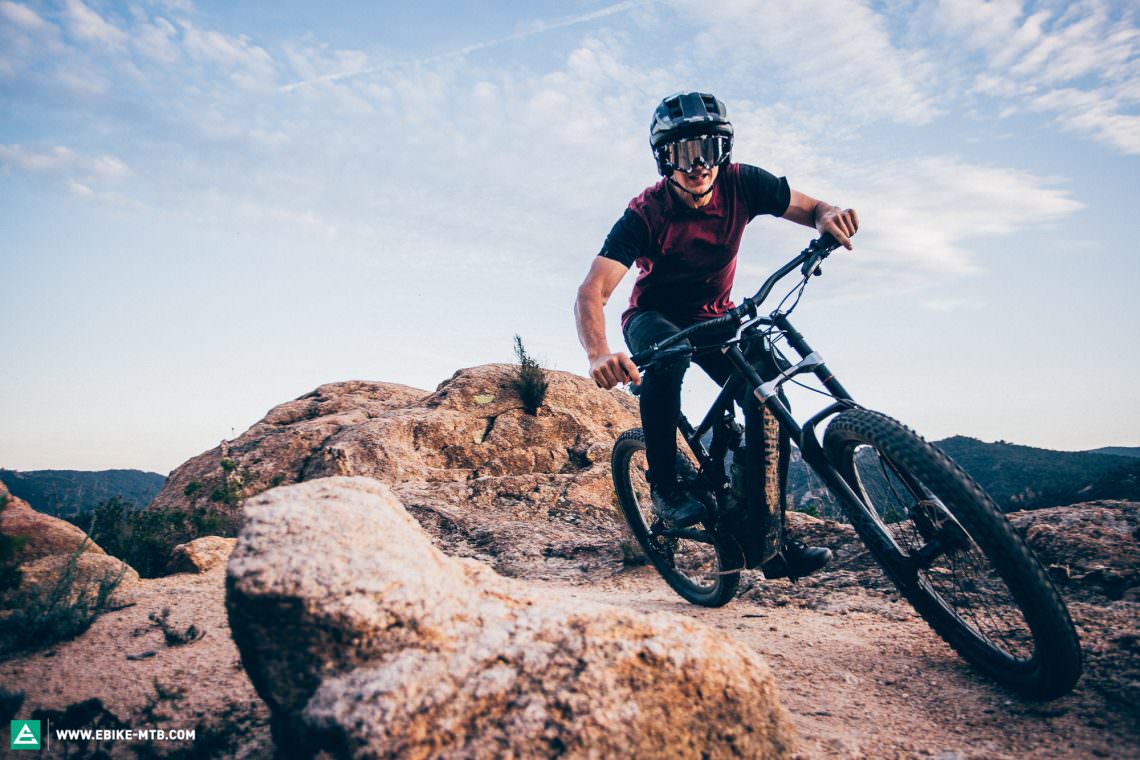
Tuning tip: 220 mm brake rotor up front
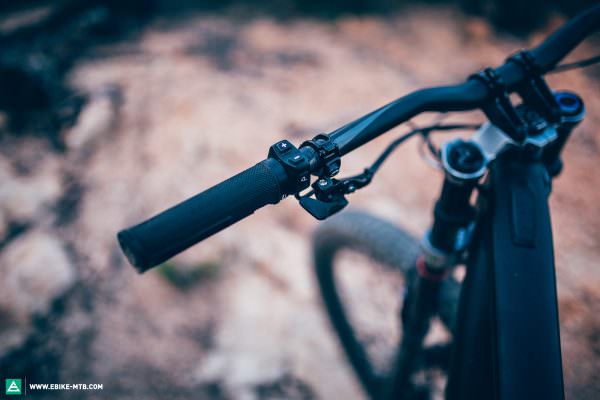
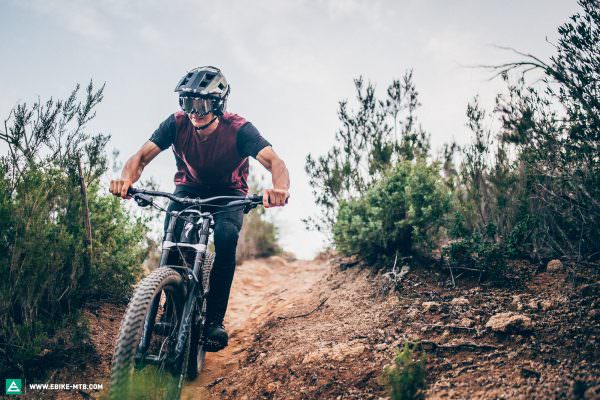
Riding Characteristics
7Agility
- sluggish
- playful
Stability
- nervous
- stable
Handling
- demanding
- balanced
Riding fun
- boring
- lively
Motor feeling
- digital
- natural
Motor power
- weak
- strong
Value for money
- poor
- top
Conclusion
The Specialized Turbo Kenevo Expert is much more than just a downhill bike with a motor. Even if it excels in rough terrain at high speeds and hitting jumps in the bike park, it will also get you back to the top of the trail with ease. The large battery, the excellent system integration and numerous details round out the Kenevo package.
Tops
- no limits on the descents
- confidence inspiring on steep terrain
- great motor integration
- useful app to tune the support levels
- large selection of frame sizes
Flops
- 11-speed drivetrain
- brakes not powerful enough for the bike’s hard-riding purpose
- boring on easy trails
You can find out more about the Specialized Turbo Kenevo Expert at specialized.com.
The test field
You can find everything you need to know about our test for the best eMTB of 2020 right here!
All bikes in test: BULLS SONIC EVO AM 6 | Cannondale Moterra 1 | Canyon Spectral:ON 9.0 | COMMENCAL META POWER 29 TEAM 2020 | CONWAY XYRON 927 Carbon | CUBE Stereo Hybrid 160 HPC | FANTIC XF1 180 Race | FOCUS JAM² 9.9 DRIFTER | Giant Reign E+ 0 Pro | Haibike XDURO Nduro 10.0 | Liteville 301 CE MK1 | MERIDA eONE-SIXTY 10K | Moustache Samedi 27 Trail | Norco Range VLT C1 | NOX Hybrid Enduro 7.1 | Orbea WILD FS M-LTD | Pivot Shuttle 29 | Rocky Mountain Altitude Powerplay Carbon 90 Rally Edition | ROTWILD R.X750 ULTRA | SIMPLON Rapcon Pmax | Specialized Turbo Kenevo Expert | Specialized S-Works Turbo Levo | Trek Rail 9.9 | Whyte E-180 RS V1 | YT DECOY CF Pro Race
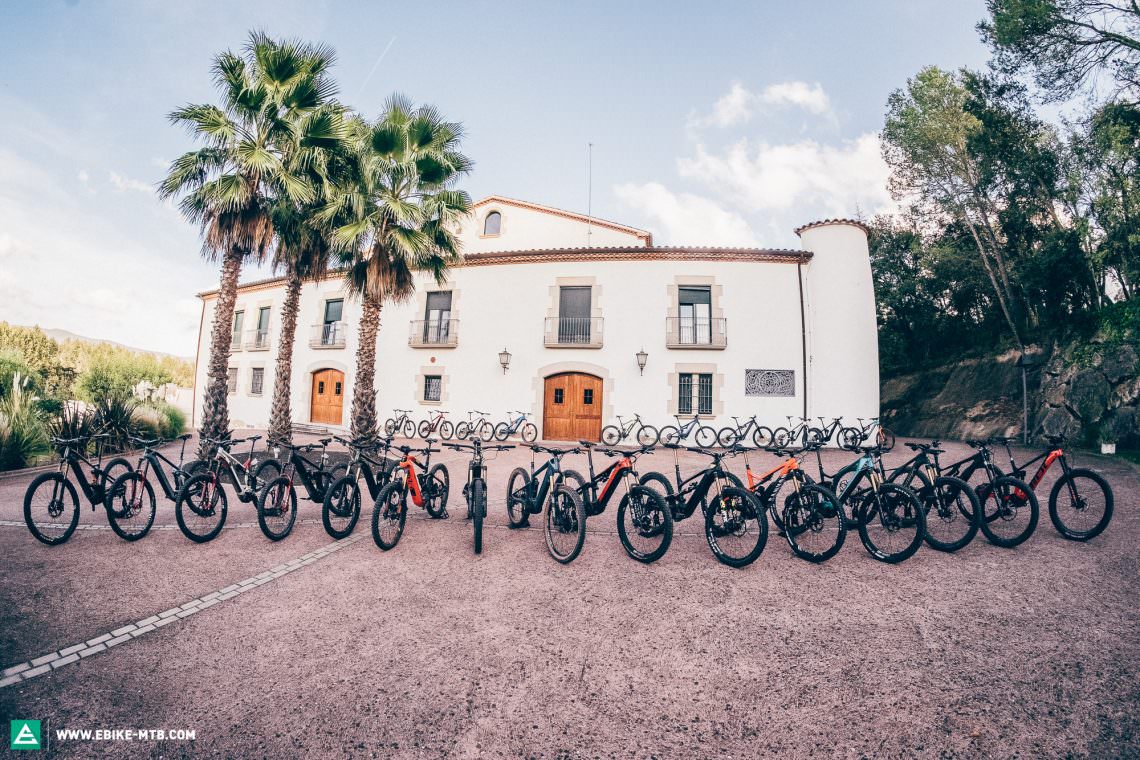
Relaxed and comfortable riding on surfaced roads, both uphill and downhill.↩
Easy climbs up trails with few obstacles, wide turns and a moderate incline.↩
Active and playful descents on easy trails with few obstacles, wide turns and a moderate slope.↩
Single-track climbs on challenging terrain. Loose ground, steps, roots, tight corners and occasionally extreme inclines.↩
Singletrack descents on challenging terrain. Loose ground, steps, roots, tight corners and small jumps as well as some very steep descents.↩
High speed descents on sometimes very rough trails with large jumps and obstacles that you can’t roll over.↩
The rating used for riding characteristics refers to the bikes in the group test and the current state of development of eMTBs. The best bikes managed to blend supposedly opposite riding characteristics, feeling both lively and stable at the same time. The handling describes the balance of the bike on downhill sections. The information regarding motor-power refers to the ride-feeling in the overall context of the bike and not exclusively to the motor – that’s why the same motor can present different values.↩
Did you enjoy this article? If so, we would be stoked if you decide to support us with a monthly contribution. By becoming a supporter of E-MOUNTAINBIKE, you will help secure a sustainable future for high-quality cycling journalism. Click here to learn more.
Words: Felix Stix, Robin Schmitt, Jonas Müssig Photos: Finlay Anderson, Robin Schmitt, Felix Stix, Markus Frühmann




